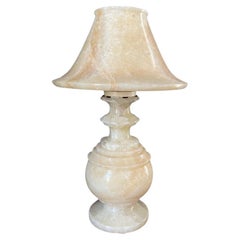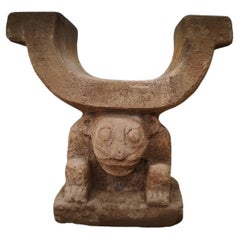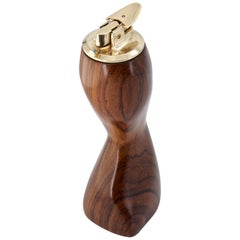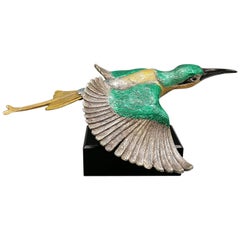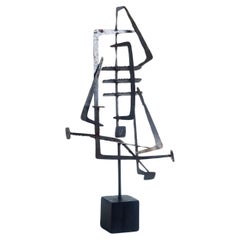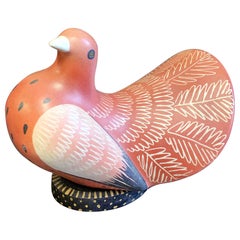Sculptures on Sale
Vintage 1960s Italian Mid-Century Modern Table Lamps
Marble
Antique 15th Century and Earlier Animal Sculptures
Stone
Vintage 1960s American Mid-Century Modern Tobacco Accessories
Wood
1990s Italian Other Animal Sculptures
Silver Leaf
Vintage 1950s Mid-Century Modern Abstract Sculptures
Steel
Vintage 1940s American Art Deco Animal Sculptures
Porcelain
Antique Early 1900s French Belle Époque Chandeliers and Pendants
Bronze, Metal
Vintage 1930s Spanish Mid-Century Modern Abstract Sculptures
Wood
Antique 15th Century and Earlier Mexican Figurative Sculptures
Terracotta
Antique Late 19th Century Austrian Figurative Sculptures
Terracotta
Vintage 1970s American Post-Modern Abstract Sculptures
Steel
Antique Early 1900s Italian Classical Roman Figurative Sculptures
Marble, Bronze
Early 20th Century Croatian Art Deco Sculptures
Bronze
Mid-20th Century French Animal Sculptures
Crystal
Late 20th Century Italian Mid-Century Modern Animal Sculptures
Plexiglass
Vintage 1980s Abstract Sculptures
Crystal
2010s Italian Modern Figurative Sculptures
Murano Glass
Late 20th Century American Federal Architectural Elements
Plaster
Antique 19th Century French Egyptian Revival Abstract Sculptures
Porphyry
Late 20th Century American Modern Abstract Sculptures
Chrome
Vintage 1960s Czech Mid-Century Modern Figurative Sculptures
Ceramic
Vintage 1980s American Mid-Century Modern Paperweights
Metal
Vintage 1950s Italian Mid-Century Modern Vases
Brass
Early 20th Century German Belle Époque Animal Sculptures
Porcelain
Vintage 1950s Italian Animal Sculptures
Murano Glass
Vintage 1920s French Art Deco Animal Sculptures
Glass
Mid-20th Century Tanzanian Tribal Tribal Art
Wood
20th Century Italian Figurative Sculptures
Marble, Alabaster
2010s Mexican Modern Abstract Sculptures
Hardwood
Vintage 1960s American Mid-Century Modern Wall-mounted Sculptures
Brass, Copper
Antique Early 1900s Italian Romantic Busts
Marble
Antique Early 1900s French Art Nouveau Busts
Alabaster
Vintage 1960s American Sculptures
Wood
Vintage 1980s Philippine Mid-Century Modern Animal Sculptures
Brass
Vintage 1970s Italian Post-Modern Animal Sculptures
Murano Glass
Vintage 1920s American Art Deco Mobiles and Kinetic Sculptures
Iron
20th Century Mid-Century Modern Statues
Marble
Vintage 1970s Mexican Animal Sculptures
Paper
Antique Early 18th Century Chinese Qing Animal Sculptures
Bronze
Vintage 1970s American Organic Modern Abstract Sculptures
Birch, Maple
20th Century Italian Figurative Sculptures
Marble
Antique Late 19th Century European Animal Sculptures
Iron
1990s Italian Other Animal Sculptures
Sterling Silver
Vintage 1960s American Mid-Century Modern Figurative Sculptures
Ceramic
Antique 1850s English Victorian Animal Sculptures
Brass
Antique Mid-19th Century Beninese Busts
Hardwood
21st Century and Contemporary European Classical Greek Figurative Sculpt...
Marble
Antique Late 18th Century Italian Baroque Figurative Sculptures
Quartz, Silver
20th Century Mexican Mid-Century Modern Animal Sculptures
Copper
Antique 1880s Figurative Sculptures
Bronze
Vintage 1970s Chinese Hollywood Regency Animal Sculptures
Ceramic
21st Century and Contemporary American Modern Animal Sculptures
Acrylic, Plastic
Antique Early 1900s French Neoclassical Revival Centerpieces
Bronze
Vintage 1980s American Post-Modern Abstract Sculptures
Marble, Brass, Chrome
20th Century Italian Animal Sculptures
Porcelain
Vintage 1970s Italian Modern Animal Sculptures
Glass
Vintage 1960s Kenyan Mid-Century Modern Animal Sculptures
Wood
2010s British Mounted Objects
Gold Leaf
Antique Late 19th Century French Art Nouveau Figurative Sculptures
Carrara Marble, Ormolu
Mid-20th Century Italian Mid-Century Modern Abstract Sculptures
Copper, Enamel
Read More
He Wrote ‘Oedipus Rex,’ but Do You Know What He Looked Like?
The Greek tragedian is said to have been handsome in his day.
These Soft Sculptures Are Childhood Imaginary Friends Come to Life
Miami artist and designer Gabriela Noelle’s fantastical creations appeal to the Peter Pan in all of us.
Salvatori Commissioned Several Famous Architects to Create Miniature Homes in Stone
Gabriele Salvatori explains how the COVID lockdowns inspired his design company's latest collection, the Village.
Christopher Norman Is Turning the Cast-Off Urban Trees of Los Angeles into Art
With a World War II–era milling machine, the California artist crafts poetic, sculptural furniture pieces.
These Human-Size Ceramic Hares Evoke Serious Emotions
Swedish artist Margit Brundin's large anthropomorphic animal sculptures are on view for the first time in the United States at Dienst + Dotter Antikviteter, in New York.
Tour the Wabi-Sabi New York Apartment of Andrianna Shamaris
As her sun-filled home reveals, the furniture maker and dealer puts a contemporary spin on antiques from around the globe.
Vicente Wolf’s Tips for Finding — and Living with — Eastern Treasures
The A-list designer shares his expertise on choosing authentic objects and displaying them with style.
Rodrigo Rivero Lake’s Mexico City Showroom Is a Museum-Worthy Trove of Spanish Colonial and Asian Antiques
The dealer and curator has spent the past 50 years amassing a collection of exceptional art, furniture and architectural elements that trace the cultural influence of the Spanish empire from Europe to the Americas and beyond.
